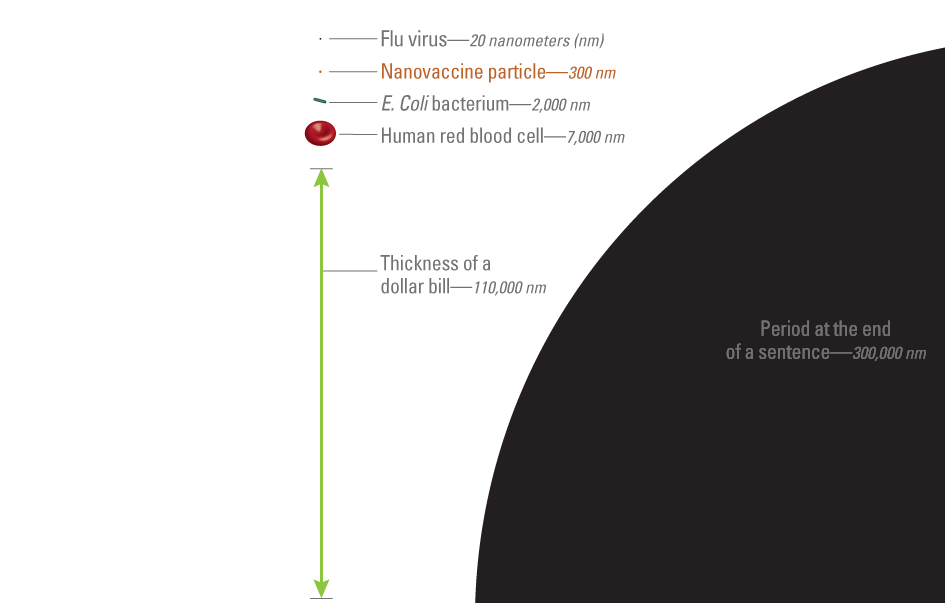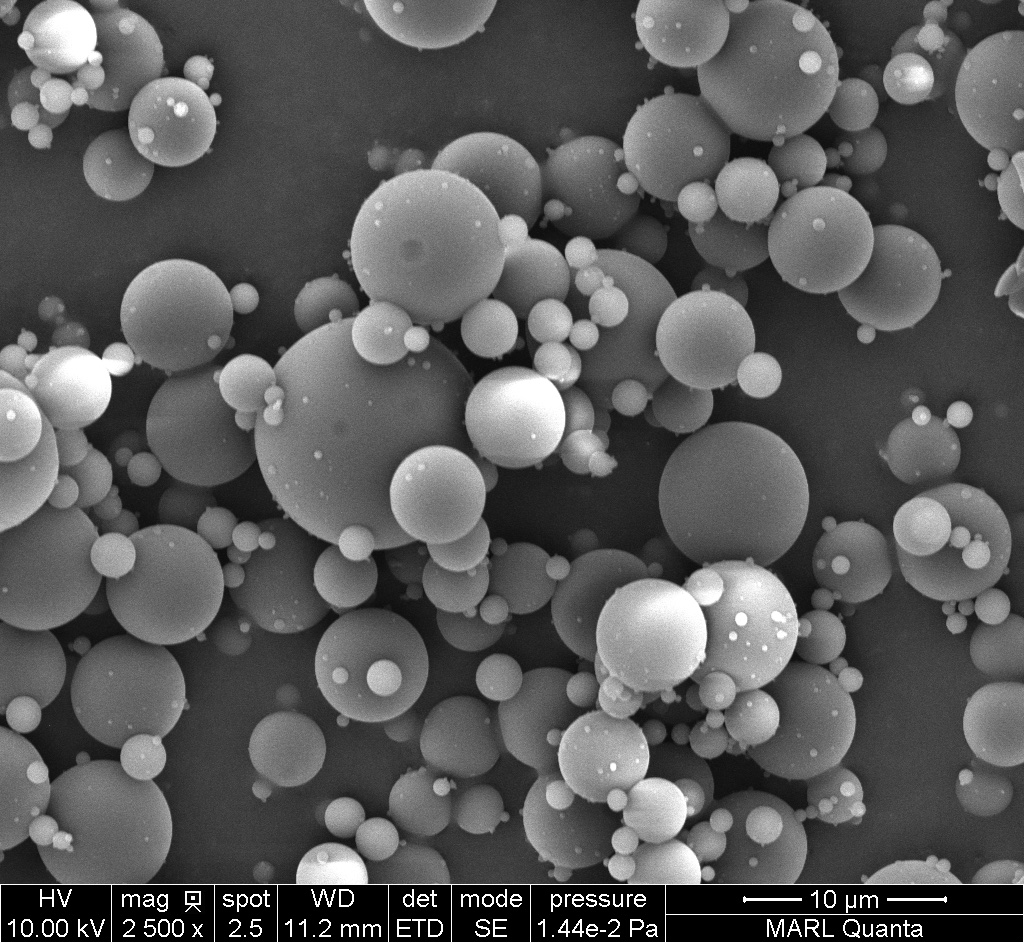The Nanoscale
Nanoscale

Nanoscale is small. A nanometer (abbreviated nm) is one-billionth of a meter. To put it another way, there are one million nanometers in a millimeter, which is about the thickness of a dime. The nanoparticles we produce average about 300 nm in diameter, larger than viruses, but smaller than typical bacteria. A 300 nm nanoparticle is tiny—you could line up 1,000 of them across the diameter of the period at the end of this sentence.
Nanoparticles
Nanovaccine Institute researchers are working to deliver life-saving treatments and disease-preventing vaccines around the globe. The tools are based on particles so small you could line a thousand of them across the dot above this i.
While the science of nanotechnology is complicated, the potential healthcare outcomes are breathtakingly straight-forward: Dramatically improved treatments and preventions for everything from cancer to autoimmune diseases could be on the near horizon. And they will ride in on a tiny Trojan horse.

This metaphor, too, is popular among the institute’s researchers. It perfectly describes how a microscopic nanoparticle, unique to each treatment, is designed to carry medications and vaccines into otherwise nearly impenetrable locations. Not only are these infinitesimal warriors able to slip past defense barriers, they also deliver their payload precisely and only where it needs to go, more effectively and with fewer side effects.
This has immense implications for human and animal health. Our immune systems are built to block intruders, whether good or ill. If needed medication can reach the appropriate target in the first place, many currently incurable diseases can be better treated or even cured. And if medication can arrive more precisely at the location it’s needed–and not where it isn’t–higher doses can be safely and tolerably administered.
Nanovaccine Institute researchers are designing nanoparticles for many uses: Some will sneak through the hard, fibrous surface of pancreatic cancer tumors to deliver chemotherapy. Others will cross the blood-brain barrier to treat diseases like Parkinson’s. Others yet will help build powerful and long-lasting immunity to diseases like influenza and parasites that destroy the lives of children in Africa.
One research thrust is a universal influenza vaccine that is reliable, globally deployable and conveys full, lifelong immunity in one dose. Using a novel, non-egg-based manufacturing process, the intranasal powder nanovaccine won’t require needles or refrigeration and will withstand temperature variations during shipping. Iowa State University chemical engineer Surya Mallapragada calls it the Holy Grail of vaccines. Nanoparticles will make it possible.



